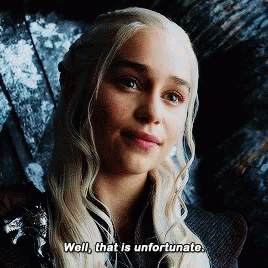One piece of writing advice I see fairly often is “let the characters do what they want.” On the whole, this is not bad advice – it tends to lead to a more organic story, and your characters will feel more believable.
However, like most advice delivered in short, easy to remember phrases, the truth is often far more nuanced. While you should, in general, let the characters do what they want, sometimes they have to do things that further the plot. A story isn’t real life, and you can’t let everything happen on its own. You need to cultivate the story the same way you would a garden.
Now, you can just make the character do whatever you need to happen, but that is rarely the best option. It creates a terrible dissonance for the reader because your character is acting in a way that goes against what you’ve established for them.
Here’s a couple ways to wrangle a character into line without creating that disconnect.

Change the Circumstances
This is, on paper, the easiest way to get a character to go along with the story. You have a character that needs to storm a building, but you’ve established that they are timid and try and avoid direct confrontation? Well, what do they value more than that fear? If you’ve previously established that they will do anything for their friends, you can have that give them a nudge. Perhaps they have a friend who is in danger if they don’t storm the building, or perhaps they have to save a friend who is inside the building.
However, I gave myself a very easy example to solve in that case. Like I said, it’s easier on paper, but it can be very tricky when applied to an actual story. For a more subtle example, let’s say you have a murder mystery. There is a character with a key piece of information, but they and the investigator hate each other, so they’ve deliberately withholding until the climax. Now, however, you realize both characters won’t talk to each other. How do you fix that?

You change the circumstances. Perhaps the big knockdown, drag out fight these characters had in Act 2 gets shrunk, so instead of it being a blow up it was terse and argumentative, but didn’t leave them unable to speak to each other. Perhaps the key piece of information is something written down, and your investigator doesn’t ask but instead breaks in and steals it – thus leading to more conflict in the sequel. Maybe the investigator sends someone to talk to the person in their stead, giving you a chance to develop a third character a bit more.
Be creative. Remember, you are in complete control of your story ultimately. Don’t let the characters lead you to a dead end and stop there. If you realize the circumstances you need require changing earlier events, make a note and come back to it later.
Change the Character
This is the trickier option, but it also gets the best results. You don’t have to contrive a circumstance to make the character further the plot, you “just” have to rework the character from the ground up to make them someone who will further the plot.
Story time: in Strange Cosmology’s first draft, I had a character that existed solely to serve a plot function. She wasn’t particularly well developed and I’d given her three character traits: she was intelligent, she was gullible, and she was a bit insecure. Not completely flat, but given the role she played in the book, she was able to fulfill her role enough to get the draft complete. However, when I went back to revise, the disconnect between her traits grew deeper. She was intelligent and working on a difficult program, yet was insecure because…well, because the story needed her to be. She was in a cutthroat academic field and had advanced very far in it but was gullible because…again, because that’s what the story needed.
She felt like what she was. A character who existed to service the plot.
If I just took those traits and smoothed them out so she made logical sense and felt like a real person, she wouldn’t perform the needed plot action – and I couldn’t engineer circumstances to get her to do it without a whole bunch of contrivance.

So I reworked the character. She lost the gullibility and some of the insecurity. I fleshed her out and made her well rounded as a person, and in the process she grew a central internal conflict. She was torn between the disconnect between doing what’s needed for scientific progress and the ethics of those actions. That internal conflict became the motivation for her to perform the plot action needed – she picked a side in that conflict, and in doing so took an action that both furthered the plot and was perfectly in line with who she had become.
In short, she was able to still fill her role in the story while becoming a much better character.
That’s why this option is harder – you have to often rewrite a large portion of what came before – but gets the best result. Every single scene with this character got redone, almost every line of her dialogue had to be changed, but the end result is so much better both from the story side and the character side.
Change the Plot
This one is the inverse of our last point. Sometimes we love the character as they are, but we can’t engineer a good circumstance for them to further the plot. In that case, if the character is the main draw…maybe you have them in the wrong plot.
Another story – during the first draft of Strange Cosmology, there was a huge stretch of Act 2 where the main characters sat in a bar, drinking and having fun, while a side character did most of the plot advancement. I needed the main characters to get out of the bar and do things, but I didn’t have any way to get them to where they needed to go and do what they needed to do.
I finally found a way to get them up and moving…around the time the book was going to end, and starting down a new pathway that was going to be a whole book in its own right. The main characters ended up having almost nothing to do in the second half of the book.

So I changed the plot. Characters that had been direct antagonists to our heroes only once in the original draft provided a central conflict that was extended throughout the book, given a full story arc and a resolution. It was the heaviest rewrite I’ve ever had to do, and it’s not something I’d recommend as a routine thing, but it was the only solution left to me – and I’m glad I went this route rather than one of the other ones, because I’m so happy with how it turned out.
Don’t forget that you can do that. If a character and a plot aren’t mixing, maybe that’s the wrong character for the plot or the wrong plot for that character.
No matter what, there’s always ways to make it fit.
And don’t forget that, if you want to see the end result of all that work, Strange Cosmology comes out on 09/10 – pre order it now!
